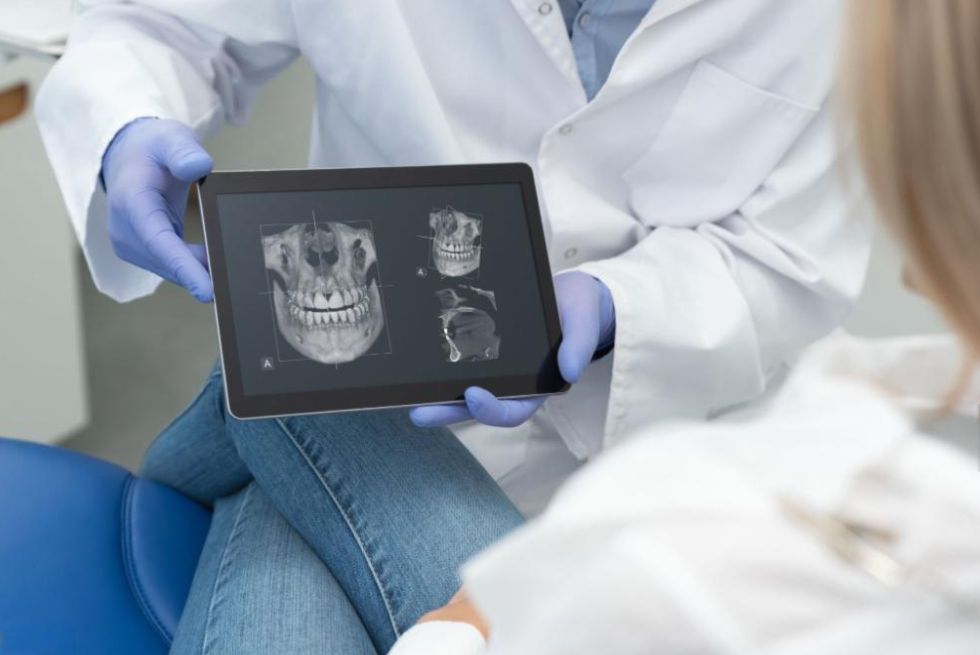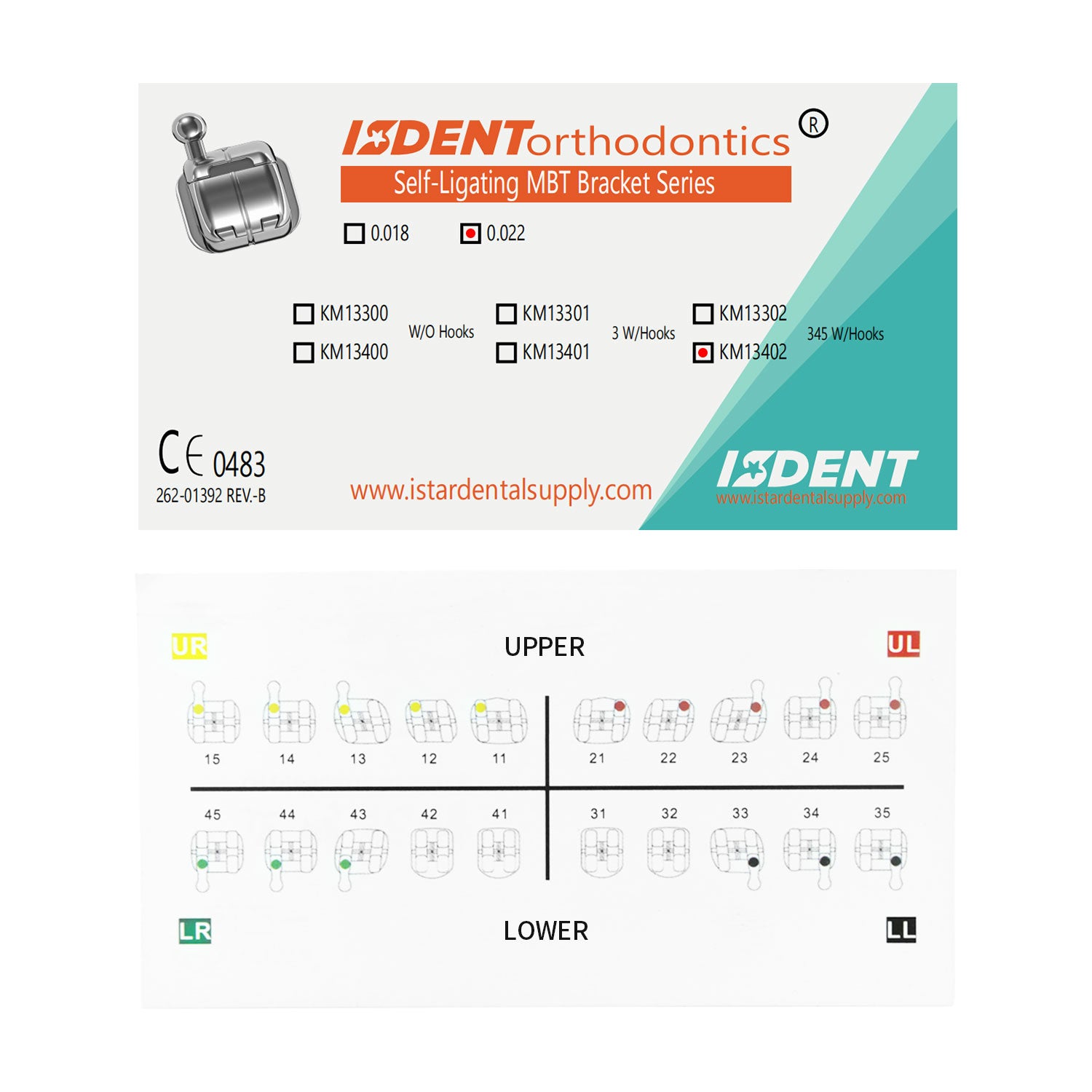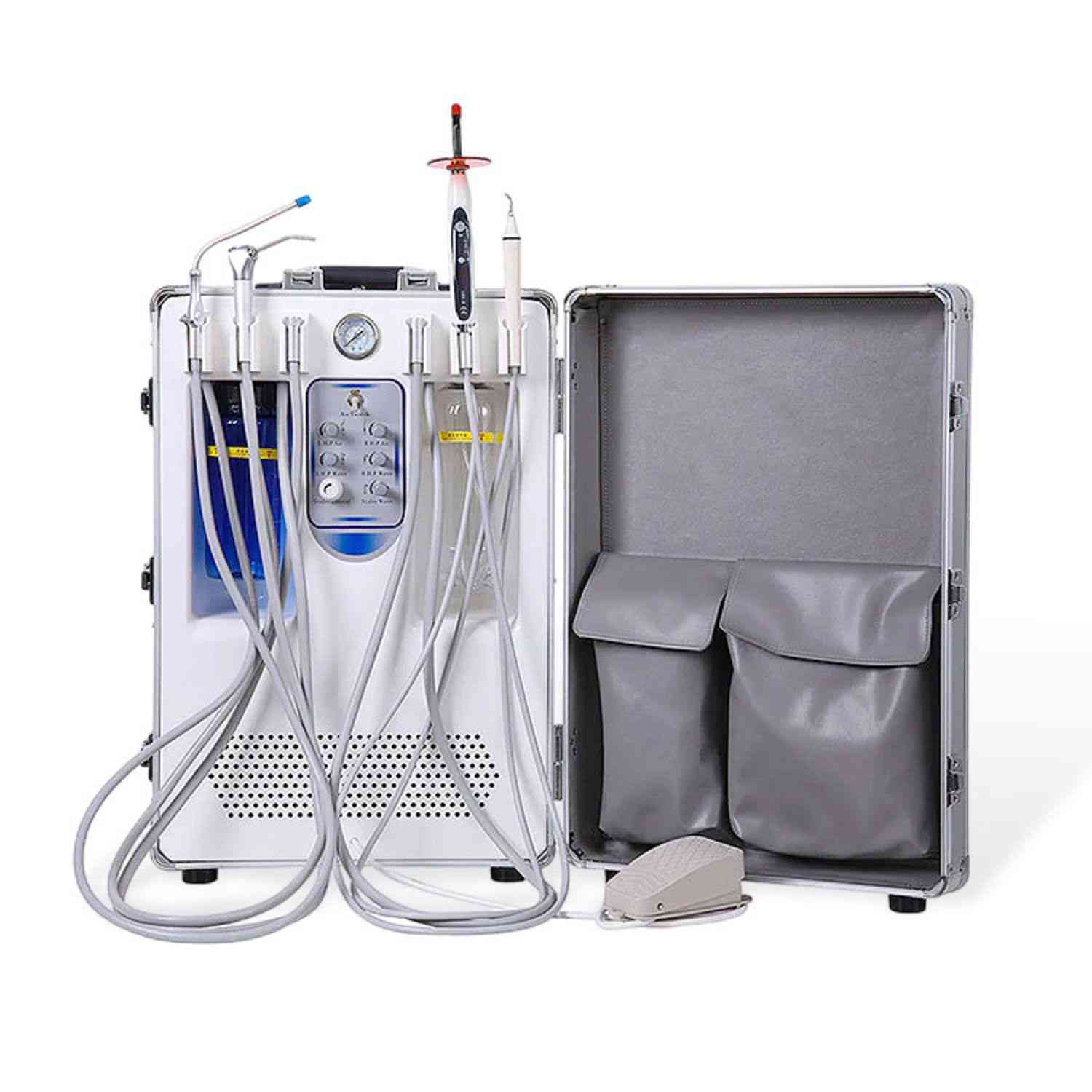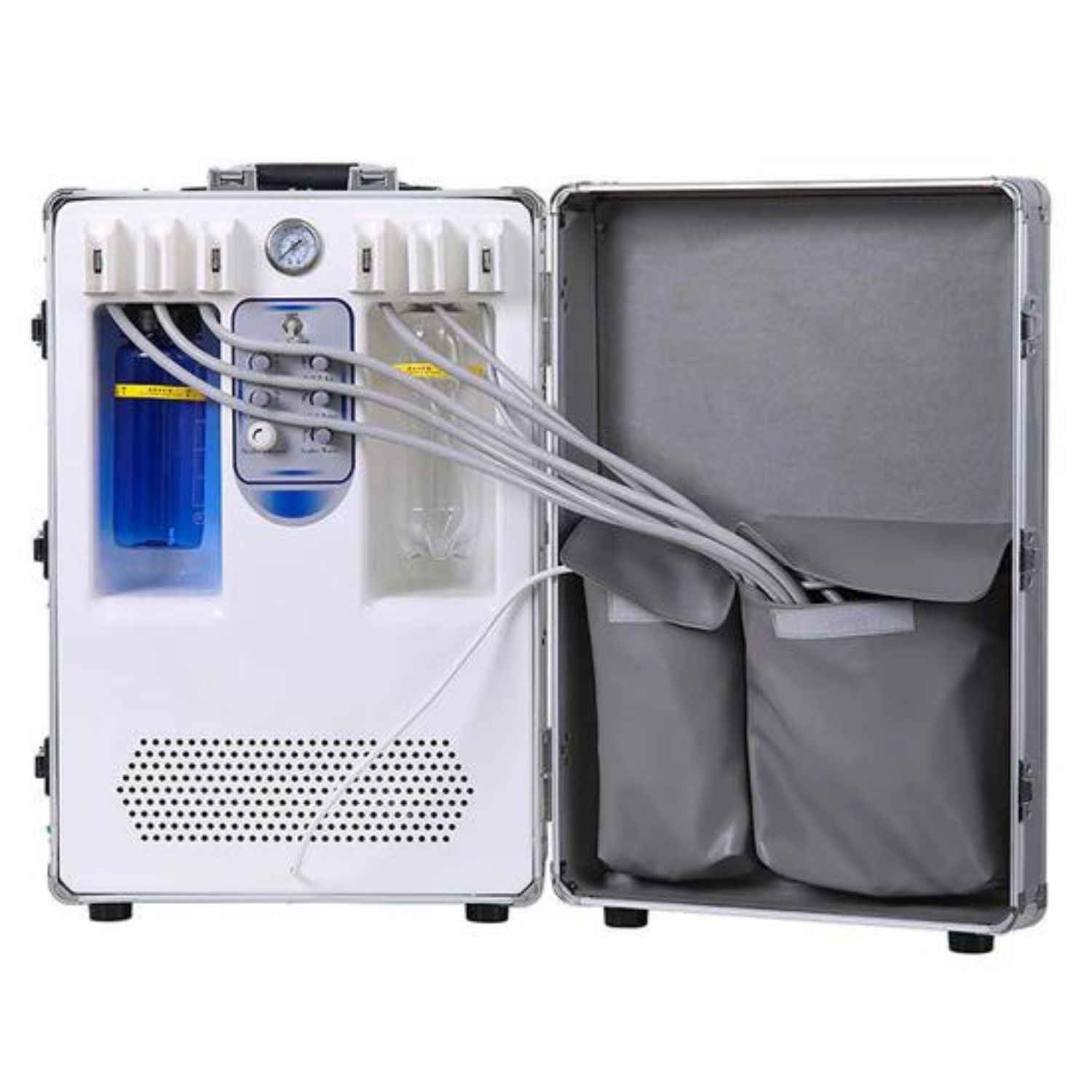Comprendre les principes fondamentaux de la sécurité des rayons X : un guide complet par ISTAR Dental Supply
Cet article propose une analyse approfondie des aspects critiques de sécurité des rayons X, indispensable pour les dentistes, les cliniques dentaires, les laboratoires dentaires, les hôpitaux dentaires et les écoles dentaires. En tant que leader Appareil de radiographie dentaire Fabricant, ISTAR Dental Supply s'engage à garantir l'utilisation sûre et efficace de nos produits. radioprotection Il ne s'agit pas seulement d'une question de conformité ; il s'agit de protéger le bien-être des patients et des professionnels dentaires. Ce guide offre des informations pratiques, appuyées par des principes scientifiques, pour vous aider à minimiser exposition aux radiations et optimisez la sécurité dans votre pratique. Cela vaut la peine d'être lu car nous permettons aux lecteurs de prendre des décisions éclairées et de maintenir un environnement sûr.
Comprendre le rayonnement X : ce que vous devez savoir
Qu'est-ce que c'est exactement rayonnement X, et pourquoi est-ce une préoccupation en dentisterie ? Radiographies sont une forme d'électromagnétisme radiation, semblable à la lumière visible mais avec une longueur d'onde beaucoup plus courte. Cela leur permet de pénétrer les tissus mous et de révéler les structures plus denses à l'intérieur, comme les os et les dents. Cependant, cette capacité de pénétration signifie également que rayons X sont une forme de rayonnement ionisant, ce qui peut potentiellement endommager les cellules vivantes.
Le montant de radiation reçu lors d'un rendez-vous dentaire radiographie est relativement faible, mais il est essentiel de se rappeler que les effets de exposition aux radiations sont cumulatifCela signifie que même de petites doses s'accumulent au fil du temps. C'est pourquoi il est important de respecter des règles strictes radioprotection Les protocoles sont essentiels.
Quelles sont les principales sources d’exposition aux rayonnements en milieu dentaire ?
Dans un cabinet dentaire, le principal source de rayonnement est le radiographie tube lui-même. Cet appareil génère rayons X en accélérant les électrons à des vitesses élevées, puis en les arrêtant brusquement, les obligeant à libérer leur énergie sous forme rayons X. Cependant, il existe deux principaux types de radiation être conscient de:
- Rayonnement du faisceau primaire : Il s'agit d'un produit intentionnellement produit faisceau de rayons X utilisé pour l'imagerie. C'est le type de rayonnement le plus intense et potentiellement le plus dangereux radiation.
- Rayonnement diffusé : Lorsque le faisceau primaire interagit avec la matière (comme les tissus du patient ou le radiographie unité elle-même), elle peut se disperser dans différentes directions. rayonnement diffusé Il est moins intense que le faisceau primaire mais présente néanmoins un risque, en particulier pour les personnes à proximité. Fuite de rayonnement existe aussi, le radiation émis à partir d'un endroit autre que le faisceau utile.

La loi du carré inverse : votre clé pour minimiser l'exposition aux radiations
Comment la distance affecte-t-elle exposition aux radiations? L'un des principes les plus fondamentaux de radioprotection est la loi du carré inverse. Cette loi stipule que l'intensité de radiation est inversement proportionnelle au carré de la distance entre le source de rayonnement.
En termes plus simples, si vous doublez votre distance par rapport à la radiographie source, vous réduisez votre exposition à un quart (1/2^2 = 1/4). Si vous triplez la distance, votre exposition tombe à un neuvième (1/3^2 = 1/9). Ce principe est crucial pour minimiser dose de radiation, en particulier pour le personnel dentaire qui peut être amené à effectuer plusieurs rayons X quotidiennement. Cela signifie que personnel dans la salle qui sont plus loin loin des rayons X recevra moins de radiations. Le quantité de rayonnement diminue à mesure que vous maximiser la distance.
Stratégies pratiques pour la radioprotection : blindage et positionnement
Au-delà de la distance, quelles autres mesures peuvent réduire exposition aux radiations? Blindage et approprié positionnement sont des éléments essentiels d’une approche globale radioprotection programme.
- Blindage : Des matériaux comme le plomb peuvent bloquer efficacement rayons X. C'est pourquoi tabliers en plomb et les colliers thyroïdiens sont utilisés pour protéger les patients pendant radiographie procédures. Murs et barrières dans le radiographie la pièce peut également contenir du plomb ou d’autres matériaux de protection réduire l'exposition pour le personnel.
- Positionnement : Le radiologue ou l'opérateur doit toujours se tenir au moins six pieds de distance de la radiographie tube et derrière une barrière de protection autant que possible. L'idéal position est à un angle de 90 à 135 degrés par rapport au primaire faisceau de rayons X, en minimisant l’exposition à rayonnement diffusé.
Quel rôle joue l’équipement à rayons X lui-même dans la sécurité ?
C'est tout équipement à rayons X créé égal en ce qui concerne radioprotection? Non. Moderne équipement à rayons X, comme le Appareil de radiographie dentairefabriqués par ISTAR Dental Supply, sont conçus avec des Caractéristiques de sécurité minimiser radiation.
Ces fonctionnalités peuvent inclure :
- Collimation : Cela restreint la faisceau de rayons X à la zone d'intérêt spécifique, réduisant ainsi les besoins inutiles exposition.
- Filtration: Les filtres absorbent une faible énergie rayons X qui ne contribuent pas à l'image mais augmentent la exposition des patients.
- Minuteries : Des minuteries précises garantissent la radiographie n'est émis que pendant la durée nécessaire, limitant délai d'exposition.
Des contrôles réguliers d'entretien et de contrôle de qualité sont également essentiels pour garantir la équipement à rayons X fonctionne correctement et puissance de rayonnement est dans des limites acceptables.
Fluoroscopie : comprendre les risques et les précautions
Qu'est-ce que fluoroscopie, et en quoi diffère-t-il de la norme rayons X? Fluoroscopie est un continu radiographie technique qui produit des images en mouvement en temps réel, souvent utilisée pour guider les procédures. Parce qu'elle implique une délai d'exposition qu'un seul radiographie, le potentiel de exposition aux radiations est plus élevé.
Lors de l'exécution de la radiographie, il est essentiel de :
- Utilisez le plus bas possible dose de radiation et le plus court délai d'exposition.
- Maximisez le distance de la source.
- Utiliser des impulsions fluoroscopie (si disponible) pour réduire radiation.
- Le radiologue doit porter un complet tablier de protection contre les radiations.
Formation et éducation en matière de radioprotection : une pierre angulaire de la protection
Pourquoi est-ce en cours formation à la radioprotection si important ? Correct Éducation à la radioprotection est crucial pour tout le personnel dentaire travaillant avec ou à proximité équipement à rayons X. Cette formation devrait couvrir :
- Les effets biologiques de rayonnement ionisant.
- Les principes de radioprotection (temps, distance, blindage).
- Le utilisation sécuritaire de l'équipement, y compris des protocoles spécifiques pour différentes procédures.
- Procédures d'urgence en cas de surexposition accidentelle.
ISTAR Dental Supply propose une gamme complète Informations sur la radioprotection et recommandations pour une utilisation en toute sécurité avec tous nos Systèmes à rayons XNous encourageons tous les utilisateurs à participer régulièrement formation à la radioprotection et des cours de recyclage.UN responsable de la radioprotection est recommandé.
Dosimétrie : surveillance de l'exposition aux radiations
Comment pouvez-vous suivre votre exposition aux radiations? Les dosimètres personnels sont de petits appareils portés par le personnel pour mesurer leur concentration cumulative exposition aux radiations au fil du temps. Ces appareils fournissent des données précieuses pour surveiller le respect des radioprotection limites et identification des problèmes potentiels.
Il est important de porter correctement le dosimètre (généralement au niveau de la poitrine ou de la taille) et de suivre le calendrier d'échange et de lecture recommandé. dosimètre est de surveiller exposition du personnel, et n'est pas utilisé pour exposition des patients.
ALARA : le principe directeur de la radioprotection
Que signifie ALARA et pourquoi est-ce si important ? ALARA signifie « As Low As Reasonably Achievable » (le niveau le plus bas raisonnablement possible). Ce principe sous-tend tous les aspects de la radioprotectionCela signifie que tous les efforts doivent être faits pour minimiser exposition aux radiations, même si les niveaux sont déjà inférieurs aux limites réglementaires. Cela limite également le risque de effets de l'exposition aux radiations.
Le principe ALARA devrait guider toutes les décisions liées à radiographie utilisation, depuis la sélection de la technique appropriée jusqu'à la mise en œuvre Contrôle des radiations mesures. Nous devons également être conscients de rayonnement rétrodiffusé et fuite de radiation.

Appareils à rayons X portables : considérations particulières
Faire appareil à rayons X portatif les unités posent des problèmes uniques radioprotection défis ? Oui. Alors que appareil à rayons X portatif Bien que les unités offrent commodité et flexibilité, elles nécessitent également une prudence accrue. Comme elles sont souvent utilisées dans des environnements moins contrôlés, le risque de contamination peut être plus élevé. rayonnement diffusé et exposition de l'opérateur.
Lors de l'utilisation d'un radiographie dentaire portable, il est essentiel de :
- Maintenir un distance de sécurité (au moins six pieds) loin du tube à rayons X.
- Utilisez un protecteur bouclier chaque fois que possible.
- Assurez-vous qu'aucune autre personne ne se trouve à proximité immédiate pendant production de rayons X.
- Soyez conscient du risque de rayonnement rétrodiffusé des objets situés derrière le patient.
FAQ
-
Est-il sécuritaire de faire des radiographies dentaires pendant la grossesse ?
En général, les soins dentaires rayons X Les prothèses dentaires sont considérées comme sûres pendant la grossesse, surtout si un tablier en plomb et un collier thyroïdien sont utilisés. Cependant, il est toujours préférable d'informer votre dentiste si vous êtes enceinte ou pensez l'être, afin qu'il puisse évaluer les avantages et les risques.
-
À quelle fréquence dois-je faire des radiographies dentaires ?
La fréquence des soins dentaires rayons X Cela dépend des besoins individuels et des facteurs de risque. Votre dentiste vous recommandera un calendrier basé sur vos antécédents de santé bucco-dentaire, votre état actuel et votre risque de développer des problèmes dentaires.
-
Quelle est la différence entre un rad et un rem ?
Le rad (dose de rayonnement absorbée) mesure la quantité de radiation absorbé par un matériau, tandis que le rem (équivalent roentgen de l'homme) mesure l'effet biologique de ce radiation sur les tissus humains.
-
Puis-je refuser les radiographies dentaires ?
Oui, vous avez le droit de refuser toute procédure médicale, y compris dentaire. rayons X. Cependant, votre dentiste peut ne pas être en mesure de fournir un diagnostic complet ou un plan de traitement sans les informations que rayons X fournir.
-
Quels sont les effets à long terme des radiations sur le patient ?
Bien qu’il n’existe pas beaucoup de recherches sur les soins dentaires, rayons X, dentaire rayons X utiliser un petit dose de radiation le risque d’effets à long terme est donc faible.
- Puis-je utiliser un appareil à rayons X portatif ? Oui, mais l'opérateur doit reste au moins six pieds de distance de l'appareil.
Principaux points à retenir
- Sécurité des rayons X est primordiale en dentisterie.
- La loi du carré inverse est un outil puissant pour minimiser exposition.
- Blindage, positionnement, et une utilisation appropriée de l’équipement sont essentielles.
- Le principe ALARA (As Low As Reasonably Achievable) devrait être le principe directeur.
- Formation à la radioprotection et le suivi sont essentiels pour tout le personnel.
- ISTAR Dental Supply s'engage à fournir des services sûrs et fiables Capteur RVG dentaire et autres Équipement dentaire, avec des informations complètes radioprotection information.
- Radiographie dentaire sont très importants pour votre santé dentaire.
- Plaques dentaires au phosphore fournit des images pour le diagnostic.
- Considérez un Scanner PSP car cela est important en radiographie numérique.
En adhérant à ces principes et en utilisant la technologie de pointe offerte par ISTAR Dental Supply, les professionnels dentaires peuvent fournir en toute confiance des soins de haute qualité tout en garantissant leur sécurité et celle de leurs patients. Contactez-nous dès aujourd'hui pour en savoir plus sur nos produits et notre engagement envers radioprotection!







